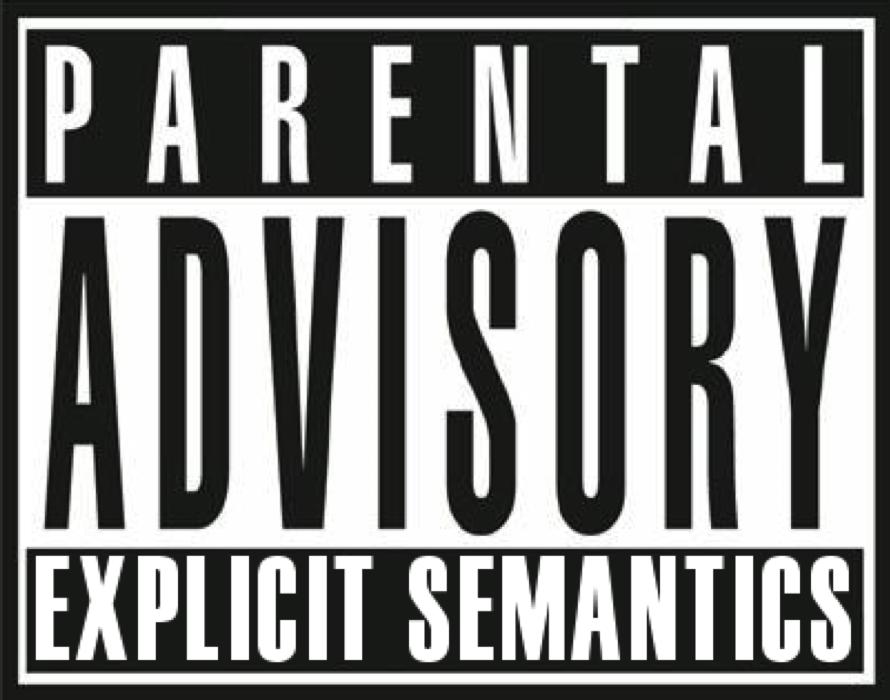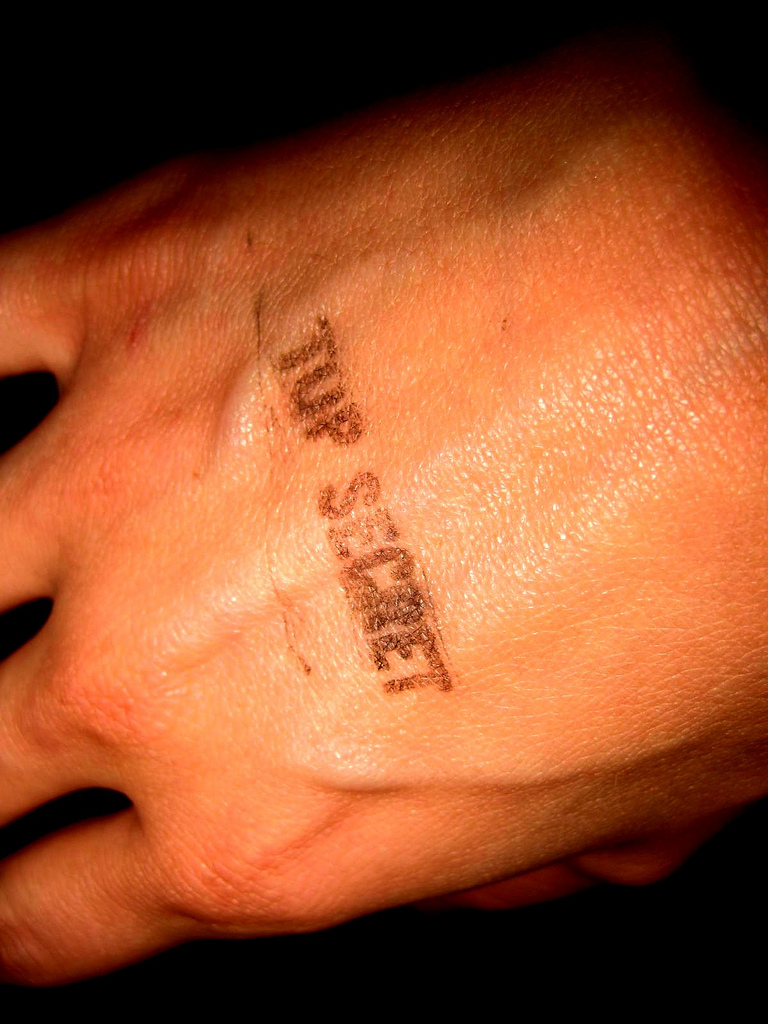Vogue editor-in-chief Anna Wintour and former editor-at-large André Leon Talley.
In December 2018, luxury fashion brand Prada released a collection of “fantasy charms” that critics say were inspired by blackface. The products, which Prada claimed were “imaginary creatures,” resemble black monkeys with bright red lips—seemingly a callback to nineteenth-century minstrel shows.
Following immediate social media backlash, most notably from civil rights lawyer Chinyere Ezie, the company apologized: “#Prada Group abhors racist imagery.” However, their tweet does not make up for their racism, at least not in the eyes of the law. In February 2020, the New York City Commission on Human Rights settled with Prada, requiring the company to “invest in restorative justice efforts to combat anti-Black racism and promote diversity and inclusion in Prada’s business activities, advertising, and products.”
This “fantasy charm” collection and its repercussions are one of the more visible, and thus memorable, instances of racism in the fashion industry. But racism isn’t always identifiable in a storefront. People are discriminated against—again and again—behind the scenes.
In June, Vogue Editor-in-Chief Anna Wintour apologized to staffers and took full responsibility for personal and company-wide failings to fight racial discrimination. She has headed the magazine since 1988 and is a powerful figure inside and outside of the industry, inspiring Meryl Streep’s performance as the domineering head of a fashion magazine in The Devil Wears Prada.
Despite her power, Wintour has done little to diversify the fashion industry. The former editor-at-large of Vogue, André Leon Talley, makes an even stronger statement, asserting that he does not think “she will ever let anything get in the way of her White privilege.”
Beverly Johnson, the first Black woman to appear on the cover of Vogue, added to the criticism of Wintour’s apology: “Wow—after three decades, fashion’s leading arbiter has finally acknowledged that there may be a problem!”
Two years ago, 126 years after Vogue’s first issue and thirty years after Wintour’s appointment, Tyler Mitchell became the first Black photographer for a Vogue cover. No Black photographer has shot the cover since.
Even Wintour’s assistants are predominantly privileged White women with Ivy League degrees. Their credentials are outshined only by those of their families. The list includes the daughter of an Oscar-winning screenwriter and the great-great-granddaughter of the chairman of the First National Bank of New York.
These problems, whether intentional or negligent, do not end with Vogue or Prada. They exist everywhere in the industry. Racism is not always a conscious decision on the behalf of editors and designers, but a result of the framework of the industry at large.
Fashion tries to sell consumers the ideas of wealth, beauty, and luxury—hence the desire to own recognizable clothing and accessories like a Supreme sweatshirt or a Gucci belt. But in a country where the average White family owns ten times the wealth of the average Black family, these ideas cannot stand on their own. They become euphemisms for “White.”
People first awarded the title of “Sexiest Man Alive” to Mel Gibson in 1985 and has given the title to thirty-one different men since. Only four of these men have been people of color.
Zendaya, the second Black woman to win an Emmy Award, admits that even when a Black woman is given a platform, it is likely that she still conforms to Eurocentric ideals of beauty with paler skin and looser curls. “I am Hollywood’s . . . acceptable version of a Black girl,” she remarked, “and that has to change.”
Systemic racism was not created by fashion companies, but when they feature White models and designers to continue selling “Whiteness,” they reinforce racism.
Even when the designs are stolen from or copy Black people, it is White people who are selling and purchasing the clothes. Gucci stole the work of Black designer Dapper Dan for its 2018 Cruise collection. It was bad enough that they blatantly stole his work and only posted an Instagram photo to apologize and acknowledge his work. But Dapper Dan’s work wasn’t respected in the 1980s and 1990s either.
“He approached designers to collaborate with him, but they told him it wasn’t chic enough,” said Olympic track star Diana Dixon, whose custom mink jacket designed by Dapper Dan was copied by Gucci. “They looked down on him and thought logos on clothing were only for minorities, even though he was open to anyone coming to his store.”
Following anger on social media and accusations of cultural appropriation, Gucci ultimately partnered with Dapper Dan, supporting the reopening of his studio and collaborating with him on a capsule collection.
While it is great when a Black person’s work is respected and they’re given an opportunity in fashion, it is normally at the peak of their career in another field. In 1984, Nike signed a deal with twenty-one-year-old Michael Jordan, creating the Air Jordans line that has since earned Nike $3.6 billion.
Rihanna, who on top of being a singer is the creator of Fenty Beauty, Savage x Fenty, and a Puma sportswear Fenty Line, announced in May 2019 a partnership between her brand and luxury conglomerate LVMH. Rihanna is the first woman of color to lead a luxury label at LVMH, also the home of Givenchy and Dior.
Michael Jordan and Rihanna are both deserving of their high-profile positions, but they are still outliers. The average Black person is not given those opportunities, even when White people often are. Black-owned businesses are more than twice as likely than White-owned businesses to be rejected for loans.
The industry is willing to bet on young White creatives while holding Black creatives to higher standards, all but requiring them to be household names. Considering the financial privileges of White people and their likelihood to come from a family already associated with the industry, the hiring system is tilted against young Black designers.
These issues are especially hard to unpack when so many companies try to boast inclusion without actually working toward it.
The founder of Reformation recently left the sustainable clothing company after it was revealed that she supported and created a racist corporate culture. This might seem antithetical to Reformation’s efforts toward transparency in fashion, but actually, it fits in quite well with the industry.
Bohemian brand Anthropologie posted a since-deleted Maya Angelou poem to Instagram on June 1. While the post itself was criticized for not mentioning Black Lives Matter or the recent protests, former employees criticized the brand for its hypocrisy. They described store policies referring to Black shoppers as “Nicks”—a coded instruction to racially profile a shopper and follow them throughout the store.
With any type of visible progress or diversity—from heartfelt pledges to Instagram posts—look behind the scenes to see the truth.
For example, the number of non-White runway models has increased over the years—from 17 percent for the Spring 2015 season to 41 percent for the Fall 2020 season—but there’s little evidence that this has undone the racism these models face.
View this post on Instagram
Anok Yai, one of only two Black models to ever open a Prada show, wrote an essay in O Magazine after a friend said she is “not a black woman, she is my friend.” Yai described a childhood marred by racism and her disappointment at finding even more racism and microaggressions in the fashion industry, as she was expected to “teach working professionals how to deal with [her] hair and skin day in and day out.”
The effects of this exclusion and discrimination do not end within the magazine pages or on runways. Fashion shapes our perceptions of ourselves and of others by determining our concepts of desirability and beauty. If haute couture focuses primarily on White people, Whiteness becomes aspirational. Other cultures are viewed as inferior by default, sometimes even by the people from those cultures.
There are so many different parts of the fashion industry, from design to production to journalism, and at every level, Black people and all people of color are cut out of the process.
“Look at the front row during Fashion Week,” influencer Claire Sulmers told Lindsay Peoples Wagner for her series on Black people in fashion. “There are no Black bloggers there. Like none.”
Artist Awol Erizku expressed a similar sentiment in the same series, saying that a “lot of times, you walk on set and you’re the only [Black person].”
It doesn’t have to be this way.
There are new initiatives fighting for racial justice in the fashion industry, most of which have formed recently in response to Black Lives Matter protests. While it is too soon to gauge their progress, the motivation of fashion professionals to create them inspires cautious optimism.
The Council of Fashion Designers of America (CFDA) released a pledge on June 4 to support the Black community and Black artists throughout the industry. The CFDA is made up of 477 designers and aims to “strengthen the impact of American fashion in the global economy.” The organization dedicates itself to creating an “in-house employment program” with the goal of forming a more diverse industry, organizing mentorship and internship programs for Black students and graduates, implementing a Diversity and Inclusion training program, and contributing to organizations fighting for racial justice.
The Kelly Initiative immediately responded with a letter to the CFDA demanding stronger action, beginning with actual metrics to measure the diversity of the industry and to hold companies accountable. The Kelly Initiative, named after Black designer Patrick Kelly, comprises Black designers and other fashion professionals, some of whom are also CFDA members.
Another initiative is the 15 Percent Pledge from Aurora James of fashion company Brother Vellies. The pledge is for retailers like Sephora, which has already signed on, to dedicate 15 percent of shelf space to Black-owned businesses.
Each of these programs might be able to achieve progress on its own, but some organizers worry that less is being accomplished as more separate groups are formed. To combat this concern, Lindsay Peoples Wagner, the editor of Teen Vogue, and Sandrine Charles, a public relations consultant, created the Black in Fashion Council. The organization aims to centralize the fight for racial justice in the fashion industry and hold brands accountable.
Diversifying and improving the fashion industry is important, not just for those within it, but for the rest of us whose lives are shaped by it. As Meryl Streep describes in The Devil Wears Prada, the fashion industry is not separate from ordinary people’s lives—“you’re wearing a sweater that was selected for you by the people in this room.” Every piece of clothing we wear is the result of choices made in rooms far, far away from our closets.
Because of the power of those choices, fashion has a role in politics and social change, as demonstrated by Hillary Clinton donning power suits to fit in with male politicians and Nike making an ad campaign with football player Colin Kaepernick and angering conservative Americans. Even an ordinary t-shirt with a slogan on the front can have an impact.
When fashion has the power to spark dialogues and ignite change, when it pushes society to fight for a cause, the industry’s disappointing reluctance to change is, in and of itself, an act of racism. The fashion industry needs to improve its response, not just for the good of the companies and their millions of workers, but for the good of those of us who wear their clothes every day.



